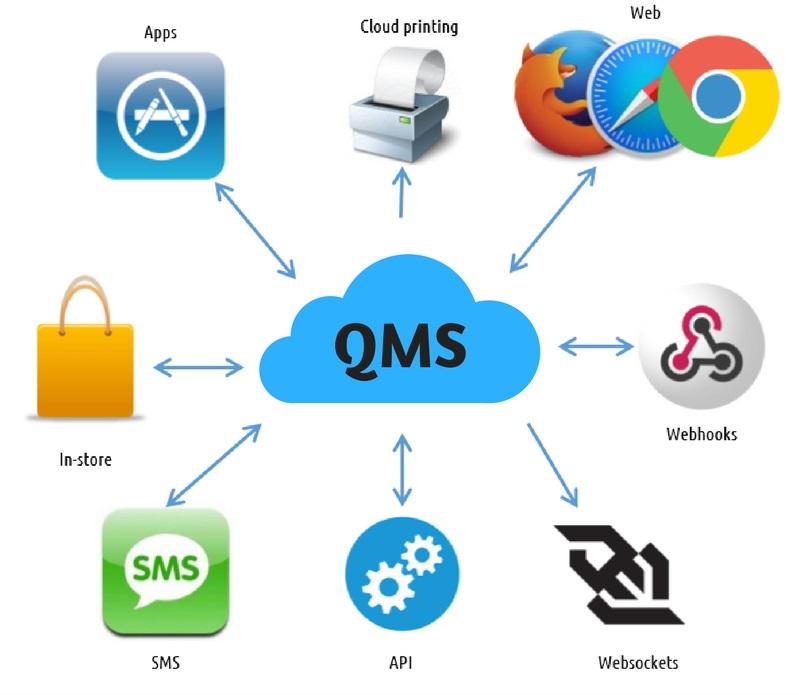Queue management system integration
What to look for when you buy a queue management system, so that you won't have any implementation hassles? This is a list of features that will make queue management integration fast and easy.
Queue management system integration features and capabilities

1. HTML5 support.
An extensible API, HTML5 support and selection of industry-specific templates provides deep integration with your platform, with embedded system logic.
2. Hardware agnostic.
Your queue system must integrate seamlessly with existing hardware, which significantly reduces the capital expense typically required for new installations. You and your users should be able to access it simply by firing up a web browser or app. No other software has to be downloaded or installed, which means no training is needed to get started.
3. Skinnable themes.
Look for inbuilt templates and themes for you to configure your business process very fast. Skinnable themes and the ability to upload custom theme files supports dynamic updates as required.
4. DSP integration.
Integration between a digital signage player or a DSP router is essential for queue systems and display signage used in banks, hospitals, government offices, airports, restaurants, etc. to communicate with customers.
5. CRM integration.
The second key integration required is with a CRM. As soon as a customer schedules an appointment, it must be entered into the CRM as a new lead (first-time visitors) or deal (for existing customers). Starting with customer identification at the first point of contact will enable the queue system to track the customer's journey through your business, which is good for improving customer experience.
6. Legacy systems.
Whether it's core banking software, healthcare information systems, or eGov IT backbones, your queue management system must seamlessly integrate with these systems. Integrators and distributors who help these institutions should be able to see the value in a system that doesn't need any exclusive hardware, and can work with their clients' existing legacy systems and third-party apps.